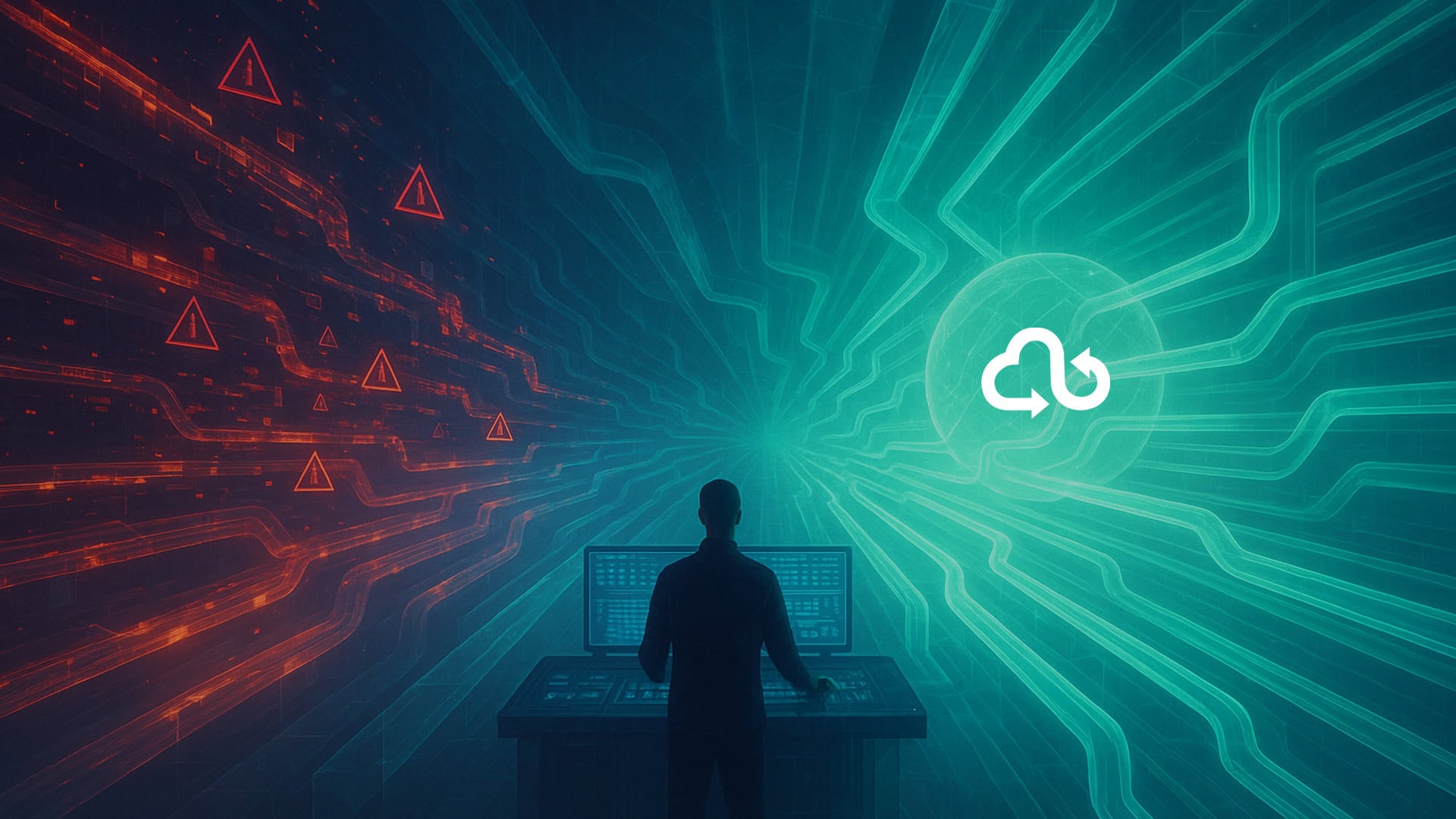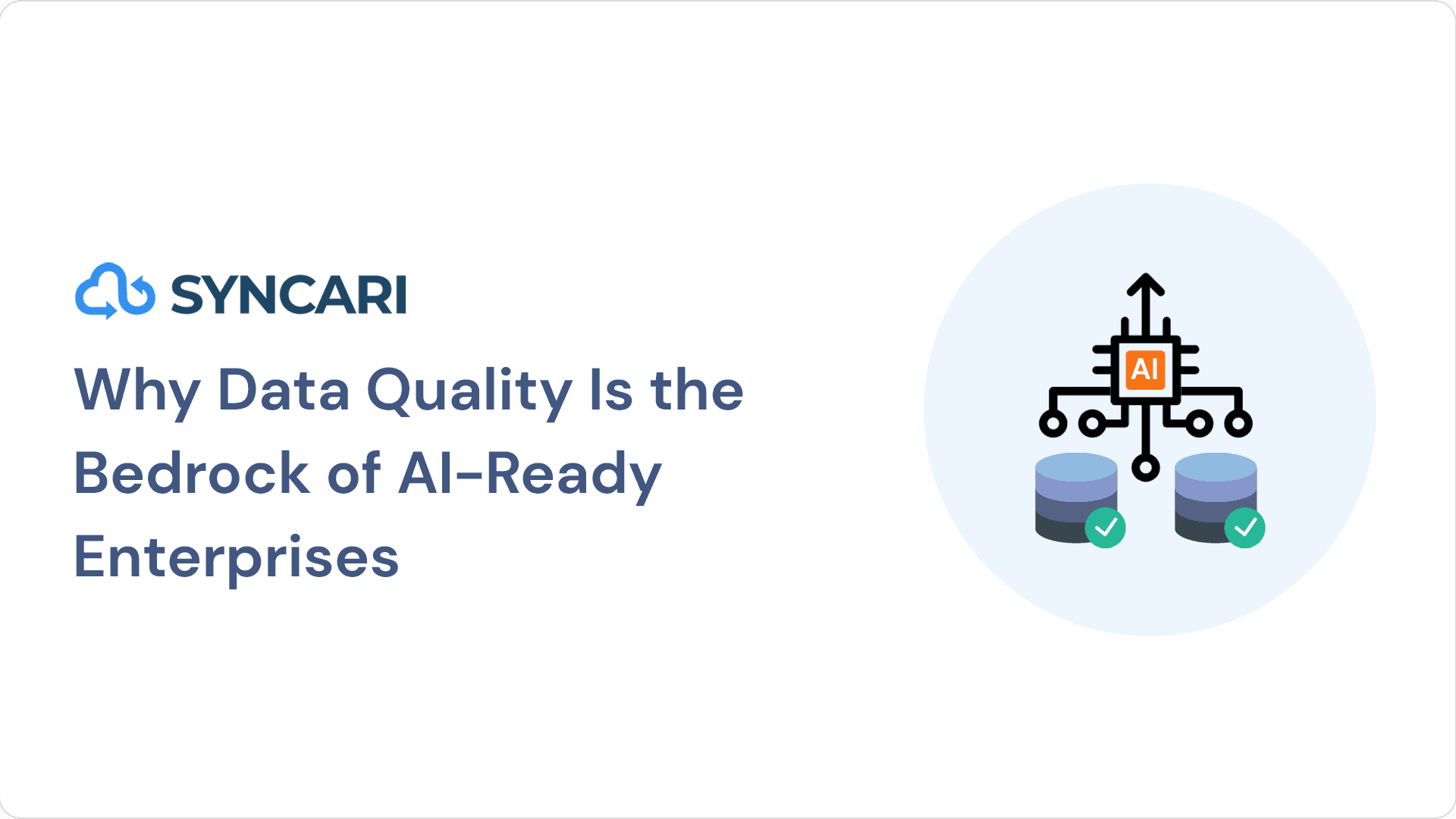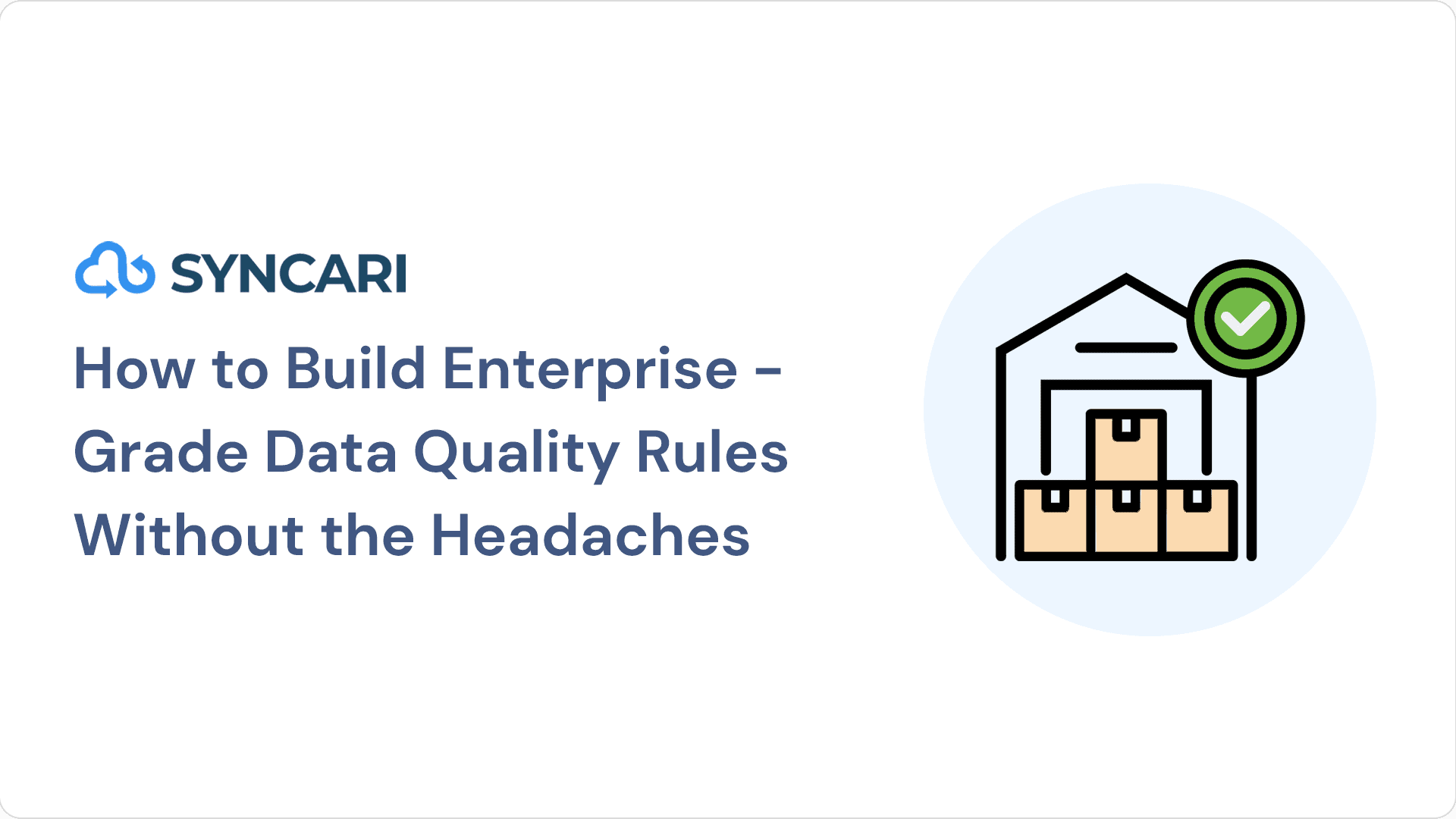Data is crucial for businesses in today’s digital-first world. Managing and leveraging this data relies on tools like Snowflake and Salesforce. Snowflake is a cloud-based data warehouse that enables advanced analytics and data sharing. Salesforce, a leading customer data platform, offers real-time personalization and improved customer experiences.
The full potential of these platforms comes to light when they are synchronized, but maintaining complex data pipelines between them can be challenging. Traditional sync methods may lead to issues like out-of-sync data, duplicates, or data loss. Syncari, an innovative platform, aims to address these challenges.
[ Related: How to Activate Product Usage Data in CRM ]
Syncari simplifies data synchronization between Snowflake and Salesforce, ensuring up-to-date and consistent data flow, which is critical for optimizing data management strategies. The following sections will delve into the significance of this synchronization and how Syncari facilitates it.
The Challenges of Data Sync Between Snowflake and Salesforce
Data synchronization is a crucial process, particularly when dealing with platforms like Snowflake and Salesforce. Both Salesforce and Snowflake offer tremendous data services and new data sharing capabilities, enabling customers to securely collaborate, extract, load and visualize data. However, the promise of seamless data flow between these systems often meets with challenges.
Problem of Siloed Data and Inconsistent Information
One of the main challenges is the problem of siloed data. In today’s digital-first world, data is dispersed across multiple data sources within the organization. When Salesforce data is not in sync with Snowflake data, it leads to data silos.
These silos can create information inconsistencies, posing challenges in personalizing customer relationships, managing risk, or delivering real-time personalization, which are all aspects modern customers expect companies to excel in.
Common Issues with Manual Data Sync Between Salesforce and Snowflake
Manual data synchronization can also introduce complications. It typically requires IT teams to write custom code, which can be time-consuming and error-prone. It also often requires costly complex technology integrations.
Even a slight mistake can lead to erroneous data in your enterprise systems, which can negatively impact your customer experiences and business decisions.
Moreover, maintaining complex data pipelines between Snowflake and Salesforce can be an arduous task. As data evolves, so do the pipelines, making it hard for data analysts, chief data officers, and a CTO to keep them updated. This can result in delayed or lost data, leading to out-of-sync data.
The Risks of Out-of-Sync Data Between Snowflake and Salesforce
Out-of-sync data can present several significant risks to an organization, particularly in an era where data is pivotal to strategic decision-making and creating personalized customer experiences.
- Damaging Customer Experience
- In the realm of customer data platforms like Salesforce, out-of-sync data can have direct consequences on customer experiences. Customers today expect companies to understand their needs and preferences intimately, which is largely achieved through data-driven insights.
- When the data is outdated or inconsistent, the personalized experiences that customers expect can be undermined, leading to dissatisfaction and potential loss of business.
- Impacting Business Decisions
- Data drives business decisions. Out-of-sync data between platforms like Snowflake and Salesforce can result in inaccurate insights and reports, which can in turn lead to poor decision-making.
- This can have serious implications on strategic initiatives, business operations, and overall company performance.
- Efficiency and Productivity Losses
- When data is not in sync, IT teams and data analysts spend significant amounts of time trying to identify discrepancies, correct errors, and update data manually. This not only reduces their efficiency but also diverts their focus from more strategic tasks.
- Compromised Compliance and Increased Risk
- In certain industries, ensuring data accuracy is not just about good business practice; it’s a regulatory requirement. Out-of-sync data can lead to non-compliance with industry regulations, resulting in hefty penalties.
- It can also increase the risk of security breaches if data inconsistencies prevent the effective implementation of security protocols.
- Missed Opportunities
- In the rapidly changing business environment, real-time, accurate data can open up new opportunities for businesses. However, if your data is not in sync, you may not recognize these opportunities in time, leading to potential revenue losses.
- Thus, out-of-sync data presents a multifaceted risk that can significantly impact various aspects of a business. Consequently, finding effective solutions to maintain data synchronization is of paramount importance for any modern enterprise.
Understanding these challenges is the first step towards finding an effective solution. In the next section, we will explore how Syncari, an innovative platform, is poised to overcome these challenges and ensure seamless data synchronization between Snowflake and Salesforce.
Exploring Syncari’s Solution for Snowflake-Salesforce Sync
Amid the maze of complex data pipelines and the growing need for data integrity, Syncari emerges as a beacon, offering a unique approach to data management that addresses the intricate needs of data synchronization between platforms like Snowflake and Salesforce.
Syncari’s Unique Approach to Data Management
Unlike traditional sync methods that often require custom code and complex technology integrations, Syncari adopts an intelligent, automated approach to data management. It ensures a seamless flow of data across enterprise systems, avoiding the creation of multiple copies that can lead to discrepancies.
This is made possible through Syncari’s robust capabilities that bring together advanced analytics, intuitive UI, and open access to both Snowflake and Salesforce data. The platform empowers companies to maintain complex data pipelines with ease, enabling them to extract, load, and share data seamlessly.
Moreover, Syncari eliminates the need for IT teams to manually write queries or integrate Snowflake and Salesforce, reducing time, complexity, and potential errors. It offers a new wave of data sharing capabilities that enable customers to collaborate securely and derive more value from their data.
How Syncari Ensures Data Integrity Across Platforms
Syncari addresses the core issues related to data integrity in two primary ways:
- Real-Time Data Sync: Syncari offers real-time personalization by syncing data across Snowflake and Salesforce almost instantaneously. This enables businesses to have an up-to-date view of their customer data, ensuring personalized customer experiences and more intelligent business decisions.
- Automated Data Cleaning and Validation: Syncari goes beyond just syncing data—it also cleans and validates data, ensuring that only accurate and relevant data resides in the enterprise systems. This not only improves data quality but also reduces risks associated with non-compliance and inaccurate insights.
By focusing on these aspects, Syncari ensures that businesses have the correct and current data at their disposal—be it for driving customer relationships, formulating business strategies, or identifying new opportunities. With Syncari, businesses can navigate the data landscape with confidence, harnessing the power of unified and reliable data from both Snowflake and Salesforce.
Setting Up Snowflake to Salesforce Sync in Syncari
Achieving a seamless data pipeline between Snowflake and Salesforce through Syncari does not have to be a complex task. With a few simple steps, you can have your systems working harmoniously.
Step-by-Step Guide to Integrating Snowflake and Salesforce data with Syncari
- Start by logging into your Syncari platform: Here, you’ll find an intuitive UI that aids easy navigation.
- Choose ‘Add System’: You will need to add both Salesforce and Snowflake systems individually. Enter the necessary connection details for each, including API keys and endpoints.
- Configure your systems: Once the systems are added, you can determine the frequency of synchronization, specify which data to sync, and set the directional flow of data.
- Test the connection: Once the setup is complete, Syncari provides the ability to test the integration, ensuring the correct and secure flow of data between the systems.
- Initiate the Sync: Now you’re ready to hit the ‘Sync Now’ button and allow Syncari to do its magic.
- Monitor the process: You can visualize data syncing in real-time, allowing for an intuitive understanding of the entire process.
Tips for Maximizing Integration Effectiveness
- Understand Your Data: Knowing where your data resides and what it represents is crucial. Define your data model correctly to ensure the proper integration of your enterprise data.
- Regularly Review and Optimize: Regularly reviewing your data pipelines can help identify any bottlenecks or errors early. Adjusting your data flow as needed can lead to better performance and more efficient synchronization.
- Secure Your Data: Ensure that access to your data is secure. Only authorized personnel should have the ability to alter or initiate data syncs.
- Educate Your Teams: Your IT teams, data analysts, and others involved in the data handling process should be fully informed about the Syncari integration. Training them can ensure smoother operations and quicker troubleshooting.
- Leverage Syncari’s Capabilities: Syncari’s advanced analytics and new data sharing innovations can help you surface insights, personalize customer relationships, and deliver more value from your data.
By effectively integrating Salesforce and Snowflake data with Syncari, companies can ensure the seamless and secure flow of data, unlocking potential for better decision-making, enhanced customer experiences, and more effective business operations.
Maintain Complex Data Pipelines with Syncari
Integrating Salesforce and Snowflake data with Syncari brings a host of benefits, significantly improving the way companies manage their data. These benefits span across various operational aspects, including efficiency, data accuracy, and decision-making capabilities.
- Increased Efficiency and Productivity
- Through Syncari, teams can maintain complex data pipelines with less manual intervention. The platform’s automation capabilities reduce the time spent on tedious tasks such as extracting, loading, and syncing data across platforms.
- As a result, IT teams, data analysts, and other stakeholders can focus more on strategic initiatives that drive business growth, rather than spending their time on mundane data-related tasks.
- Enhanced Data Accuracy and Consistency
- Syncari’s unique approach ensures a high degree of data integrity. It eliminates the multiple copies of data typically found in disjointed systems, which often lead to inconsistencies and inaccuracies.
- With Syncari, data from Snowflake and Salesforce is synchronized in real-time, ensuring that all teams are working with the most up-to-date and consistent data. This significantly reduces the risk of decision-making based on incorrect or outdated information.
- Improved Decision Making and Reporting
- By joining native Snowflake data with Salesforce customer data, Syncari provides a comprehensive view of customer relationships. The platform’s advanced analytics enable companies to surface insights that drive informed decision-making.
- It enables users to visualize data, thereby facilitating clear and concise reporting that can guide strategic planning and performance evaluation. Moreover, Syncari’s new data sharing capabilities enable companies to securely collaborate, share data and insights across teams, and deliver intelligent customer experiences.
In an age where customers expect personalized experiences, keeping Salesforce and Snowflake in sync with Syncari is a game-changer. It allows companies to leverage data efficiently, making the most of the customer data residing in Salesforce, and the enterprise data in Snowflake.
This not only improves the customer experiences but also optimizes the operations, thereby delivering more value from the data. The outcome is a win-win for both the company and its customers, driving business growth in the process.
Best Practices for Maintaining Synchronization
Maintaining synchronization between Snowflake and Salesforce with Syncari can be a seamless experience if you follow a few best practices. These practices focus on regular checks, troubleshooting, and scalability to ensure your integration operates smoothly as your business grows.
Recommendations for Routine Check-Ups
- Monitor your data pipelines regularly: Regular monitoring helps you identify any anomalies or potential issues in the data pipelines. Data analysts and IT teams should routinely check the status of data synchronization, look for any errors, and ensure data is consistently updated across both platforms.
- Validate data integrity: To maintain the accuracy of customer and enterprise data, it’s essential to routinely validate the data integrity. This involves cross-checking a subset of data across both Salesforce and Snowflake to ensure the sync is accurate.
- Evaluate performance: Regularly evaluate the performance of the integration in terms of speed, reliability, and data transformation capabilities. It can be useful to record performance metrics over time to identify trends and potential areas for optimization.
Troubleshooting Common Issues
Despite best efforts, you might face some common issues when maintaining complex data pipelines. Here are some tips for troubleshooting:
- Data discrepancies: If there’s a discrepancy between the data in Salesforce and Snowflake, it could be due to a sync issue or a problem with the data source. Ensure you’re using the correct SQL query or load data method, and check that the source data is correct.
- Integration failure: If the integration fails, the issue may lie with the snowflake output connection or the Salesforce API limits. Check your connection settings, API usage, and ensure you’re within the service limits of both platforms.
- Slow performance: Slow data sync could be due to a large volume of data or inefficient data transformation operations. Consider optimizing your data model, reducing the data volume where possible, or increasing the system resources.
Tips for Scaling Your Synchronization as Your Business Grows
As your business grows, the volume and complexity of data also increase. To scale your synchronization effectively:
- Plan ahead: Anticipate the data growth and prepare for it in advance. This could involve upgrading your Syncari plan, increasing system resources, or expanding the Snowflake data warehouse capacity.
- Automate where possible: As data volume grows, automation becomes crucial. Make the most of Syncari’s automation capabilities to reduce manual work and improve efficiency.
- Invest in training: Ensure your team is well-versed in managing the synchronization. Regular training sessions can keep them updated on new data sharing innovations and best practices.
By following these best practices, you can maintain an efficient synchronization between Salesforce and Snowflake, ensuring your business leverages its data to deliver real-time personalization and intelligent customer experiences in today’s digital-first world.
Conclusion
The seamless synchronization between Salesforce and Snowflake offers an unparalleled advantage in managing and leveraging your enterprise data. By maintaining this synchronization, you enhance your ability to offer personalized, real-time customer experiences and manage complex data pipelines efficiently.
Syncari plays an instrumental role in this process, providing a user-friendly, advanced tool that makes managing complex technology integrations easier. With Syncari, maintaining sync between Salesforce and Snowflake becomes less burdensome and more effective, enabling your business to innovate and deliver value to every customer.
Start your Syncari journey today to leverage the full potential of your Salesforce and Snowflake integration and step into the new era of advanced data collaboration.



